#will tudor source
Explore tagged Tumblr posts
Text
👋 Welcome to Wolf Hall Gifs

This blog is dedicated to gifs from the BBC series "Wolf Hall." The series is an adaptation of Hilary Mantel's trilogy: "Wolf Hall," "Bring Up the Bodies," and "The Mirror and the Light." The first series premiered in 2015, and the continuation, "The Mirror and the Light," released on November 10, 2024.
Our mission is to showcase the brilliant performances of the cast and highlight the great moments of the show.
You can request any specific scenes or character edits, and we’re tracking #wolfhalledit and #wolfhallgif (in case you want us to share your gifs ❤︎.)
Feel free to send us a message!
🚨 "Wolf Hall: The Mirror and the Light" will premiere in the US on PBS on Sunday, March 23, 2025.
Additionally, we have an old blog where you can check out our previous edits. (link)
📌
#wolf hall#the mirror and the light#blog intro#blog info#source blog#period drama#the tudors#thomas cromwell#signal boost#hilary mantel#mark rylance#henry viii
29 notes
·
View notes
Text
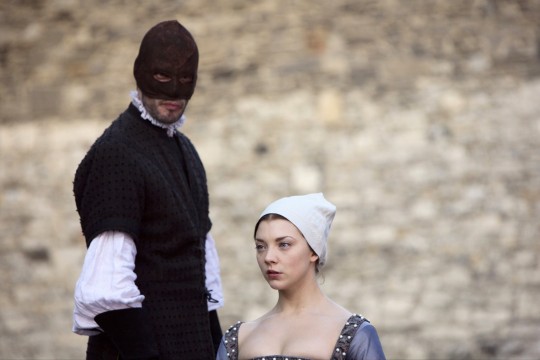
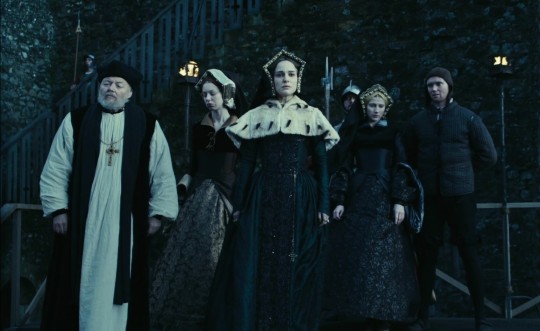
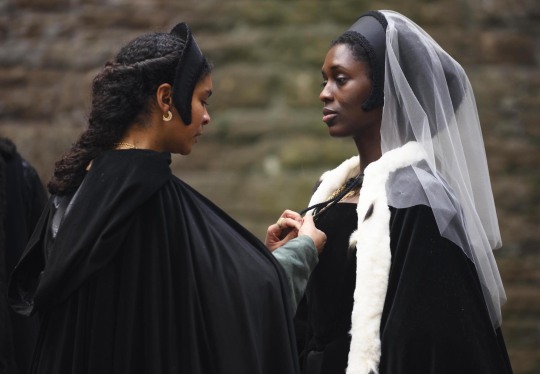
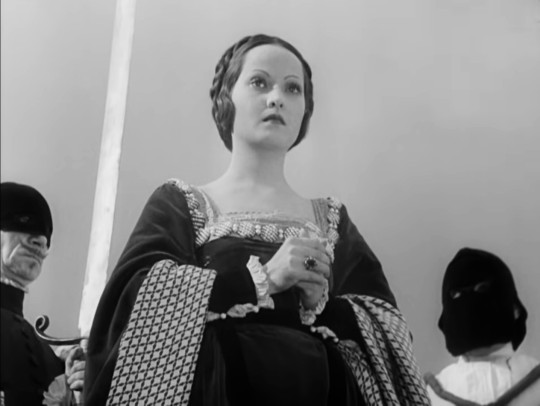
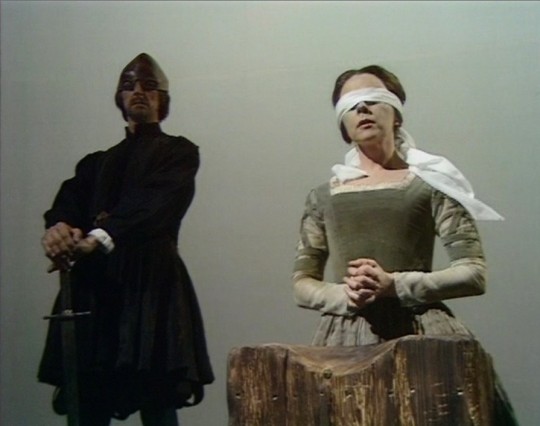
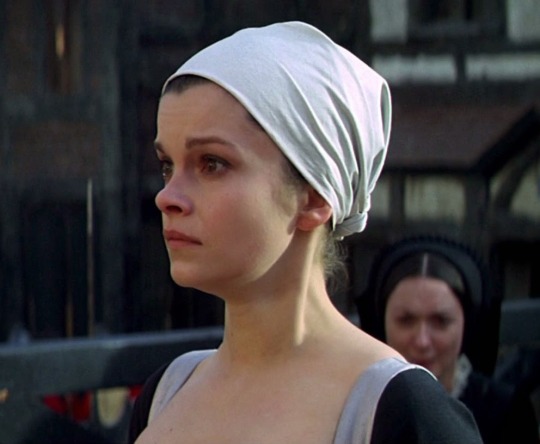
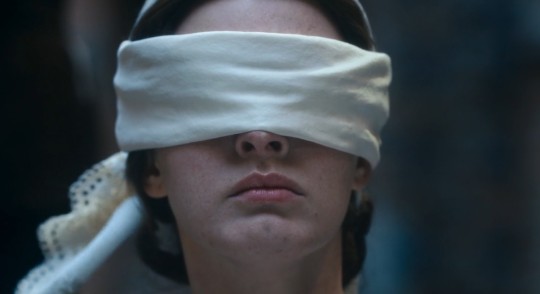
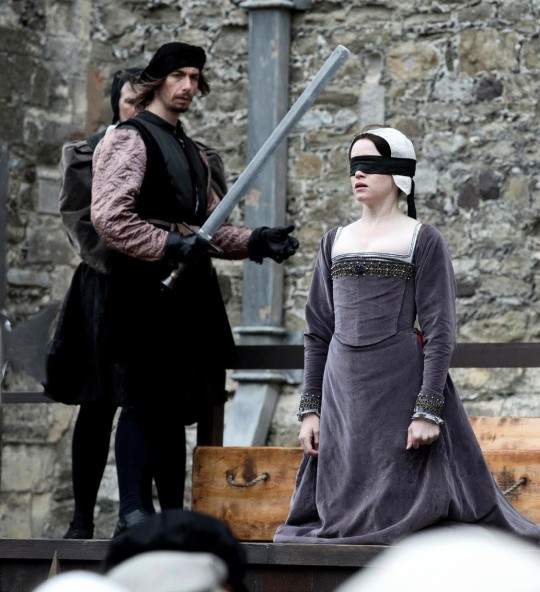
May 19, 1536 - Anne Boleyn is Beheaded
"Good Christian people, I have come here to die. For according to the law, and by the law, I am judged to die and therefore, I will speak nothing against it. I am come hither to accuse no man, nor to speak of that whereof I am accused and condemned to die. But I pray God save the King and send him long to reign over you, for a gentler nor a more merciful prince was there never. And to me he was ever a good, a gentle, and sovereign lord. And if any person will meddle of my cause, I require them to judge the best. And thus I take my leave of the world and of you all, and I heartily desire you all to pray for me. O Lord, have mercy on me. To God, I commend my soul.' And then she knelt down, saying, 'To Christ I commend my soul, Jesu receive my soul', divers times, till that her head was stricken off with the sword.” - Anne's execution, as reported in Hall's Chronicle (1548)
""On a scaffold made there for the said execution, the said Queen Anne said thus: 'Masters, I here humbly submit me to the law, as the law hath judged me. And as for mine offenses, I here accuse no man; God knoweth them. I remit them to God, beseeching him to have mercy on my soul. And I beseech Jesu, save my sovereign and master, the King - the most godly, noble, and gentle prince that is, and long to reign over you.' Which words were spoken with a goodly smiling countenance. And this done, she knelt down on her knees and said: "To Jesu Christ, I commend my soul'. And suddenly, the hangman smote off her head at a stroke with a sword." - Anne's execution, as reported in Wriothesley's Chronicle (1559)
"And so she went to the place of her ordeal
To obey the will of justice,
Still showing a serene countenance,
As if she did not grieve for this world in any way;
For her coloring and face were such
That never before did she seem so beautiful ...
There was no one who does not have firm hope
That her spirit will not be in agony,
Given her great faith and wise patience,
Which rose above womanly courage.
Everyone, on the basis of her mightily steady end,
Judges her life to have been prudent
And believes they have committed a great offense
In having thought so ill of her." - Lancelot de Carle's The Story of the Fall of Anne Boleyn (1536, trans. Joann Dellaneva)
"Anne, the late Queen, suffered with sword this day within the Tower upon a new scaffold and died boldly. Jesu take them [i.e. Anne and the five men] to His mercy if it be His will." - John Husee to Lord Lisle, May 19, 1536
#tudor era#anne boleyn#tudorerasource#dailytudors#perioddramaedit#anneboleynedit#I'm in mourning today tbh#mourning this brave ambitious and incredibly determined woman#tears are actually in my eyes as I write this#RIP Queen Anne#your legacy will live on#and fuck Henry!!!#wanted to supplement the familiar Hall execution speech#with three lesser known sources#especially de Carle since the Dellaneva edition is expensive and print only#the tudors#natalie dormer#the six wives of henry viii 1970#dorothy tutin#anne boleyn 2021#jodie turner smith#anne of the thousand days#genevieve bujold#wolf hall#claire foy#blood sex and royalty#amy james kelly#the private life of henry viii#merle oberon#the other boleyn girl
129 notes
·
View notes
Text
This Beautiful dress with leafs on is worn on Gemma Reeves as Margaret Moore in The Tudors: His Majesty's Pleasure (2008) and many years later worn on uknown actor as Sarah Myddelton Wynn in The Stuarts: A Bloody Reign the Documentary (2018) and worn again on Laura Carmichael as Margaret Pole in The Spanish Princess (2020) and worn again on Isabella Brownson as Katherine Grey in My Lady Jane Season 1 Episode 8 (2024)




#recycled costumes#the spanish princess#my lady jane#laura carmichael#margaret pole#isabella brownson#katherine grey#historical drama#costume drama#reused costume#reused costumes#perioddramasource#dramasource#drama series#the tudors#source: historicalreusedcostumes
53 notes
·
View notes
Note
How do historians view Eustace Chapuys' description of Anne Boleyn? It is said that most people think he is exaggerating?Researchers at Anne Boleyn seem to have significant differences… The biographies of Mary I seem to fully agree with his records
I'd actually push back on the latter claim. Academic biographies > pop history biographies tend to give Chapuys, at best, a 'perhaps' re: his claims about Anne as a stepmother, at the least...
For example:
"Perhaps at Anne Boleyn's instigation, but certainly with the King's active support, Mary was several times pressured to acknowledge the illegality of her mother's second marriage, her own illegitimacy and the precedence now due to her infant sister."
(realize this is technically not an excerpt from a Mary I biography, but Judith M. Richards' on Mary I basically states the same, that at most Lady Shelton was there to "keep a particularly close eye" on Mary...and even that instruction, she attributes to Thomas Cromwell, not 'Queen Anne')
"For an illegitimate royal offspring, Mary enjoyed a level of household status that was generous and indicative of Henry's personal affection for her. Although her household was little more than a glorified Privy Chamber staff whose first loyalty was to the king, the fact that she had a Privy Chamber staff at all was indicative that she still enjoyed high status. Her household existed through the king's generosity, but that was fully consistent with her status as his natural daughter—something the king's chief minister, Thomas Cromwell, was at pains to point out to Henry's critics. She was not, as Eustace Chapuys claimed at times, a servant in Elizabeth's household. She is not listed as part of the Privy Chamber staff of Elizabeth's household. Rather, Mary's household formed one half of a combined establishment funded by the crown. [...] this source must be treated with caution, as Chapuys habitually exaggerated the plight of Catherine and Mary probably in order to convince the Emperor to take stronger measures against Henry on their behalf."
#anon#i think it's great that tudor primary sources- by and large- are so widely accessible#however...not everyone has the training to properly assess them#and most don't have the humility to recognize that consulting expert opinion is...well...how to best form one's own?#and that's really it. the perhaps vs certainly#as is the judgement of jeri l mcintosh is well#we have henry's letters and council notes on this matter#several. and all we have is one of anne's#and the letter we have of hers is hardly damning...it actually (and at what seemed to be the height of her triumph#and the surety of her position)#advises her aunt to relent and leave her alone#she calls her her enemy but she also says that she had only wanted to warn her of the consequences which would result from her defiance#which is...i mean...also. something that mary's own supporters did#(obviously anne was not among them and obviously she had different motivations and vested interests in doing so#but what i'm driving at is that how it's viewed depends on perspective#and reconstruction. we don't know what we don't know .#mary actually enjoyed a fairly warm relationship with lady shelton after anne's execution#maybe mary really was the most understanding and forgiving person on earth#...or...maybe their relationship prior to that was more complex and not as driven by bullying as chapuys portrayed#we have circumstantial evidence like that which is suggestive of many possible narratives; not necessarily just one)
12 notes
·
View notes
Text
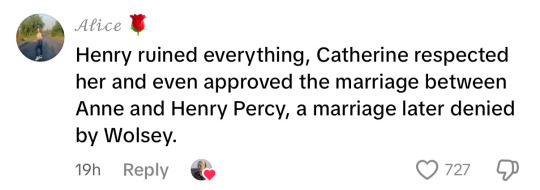
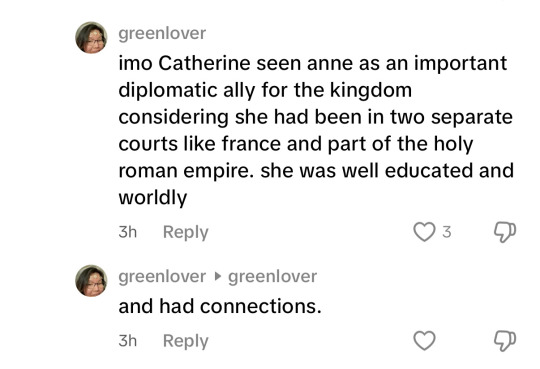
Tiktok Tudor fans are so unhinged… imagine making things up like this?
#Anne Boleyn#Catherine of Aragon#Tudors#I can’t#this is so funny#say what you want about the Tudor fandom on tumblr#nobody was ever this unhinged#and when you dare to ask these people to source their nonsense they say google it
14 notes
·
View notes
Text

All I've ever wanted!
Redheaded Mary wearing a crown!!! Sat on her throne! Holding a big ass sword! ❤️❤️❤️
15 notes
·
View notes
Text

TUDORWEEK2024 - DAY FIVE: Your Favourite Tudor Iconography
The Hours of Elizabeth The Queen
The Hours of Elizabeth the Queen has been described as the most lavish Book of Hours produced in fifteenth-century England. The text itself contains three sequences of Hours: the Hours of the Virgin and also the Hours of the Cross and of the Passion together with a number of other devotional texts. The illustration is particularly lavish. In addition to the full-page images before important textual divisions the book includes an astonishing 423 painted initials with narrative or decorative scenes. The manuscript is known as the Hours of the Queen because of an inscription at the bottom of the pictured miniature of the Crucifixion: ‘Elisabeth the quene’. This appears to be a signature of Elizabeth of York (d. 1503), daughter of Edward IV (1461-83) and wife of Henry VII (1485-1509). However, the manuscript was not originally made for her. Later in the volume (f. 152) is a prayer for the soul of Cecily or Cicely (d. 1450), Duchess of Warwick, and it is likely that the book was made for a member of her family, possibly her father, the powerful Richard Neville (b. 1400, d. 1460), 5th Earl of Salisbury, the nephew of Henry IV (1399-1413). Thus this magnificent book was deemed important enough to have been passed to important members of English aristocracy, in this case, ultimately the daughter, wife, and mother of successive kings of England.
#tudorweek2024#elizabeth of york#medieval manuscripts#book of hours#tudor history#primary sources#tudorerasource#15th century#medieval history
26 notes
·
View notes
Text
What fool?
Catalina: Where's Mary?
Elizabeth: She’s busy-
Edward: being a fool
Catalina: What kind of fool?
Elizabeth: The 'everything is now on fire' kind
#six the musical#six the musical incorrect quotes#incorrect six quotes#six the memecal#catherine of aragon#elizabeth tudor#edward tudor#mary tudor#even tho she's only mentioned#tudor memes#six the kids#source: helluva boss
74 notes
·
View notes
Text
Because I’ve got my finger right on the pulse, I’m gonna make a meandering post about a long-cancelled period drama rather than the major one currently airing. But this has been in the drafts for ages, and yeah I just really didnt like the depiction of Kett’s rebellion in Becoming Elizabeth. And I need to complain about it lol. I wish i could say it was a good effort but im not sure i can even give it that...
a looong post because i cannae haud me wheesht
Firstly, and perhaps one of the most important things, is they have the rebels in the show rally around the cry, ‘kill all gentlemen!’ This wasn't a phrase used by the rebels at the Mousehold camp - it's been attributed to the revolts in the West, but i'd agree with recent research that it doesn't seem to actually have been said by anyone. The sentiment in of itself - the tearing down of the elite class - isn't something expressed in the articles the rebels produced, even if there were underlying tensions between the two groups. You do see it appear in individual testimonies sometimes, like here:
'the pore peple are now Famysshed but C of us wyll rise one daye agenst them & I wylbe one day he'.
I'm also not saying they were nice to the gentlemen they captured, or that they didn't want to confront these landed elites, because they did. But the rebels weren't, as shown in BE, slitting the throats of random nobles they came across. That kind of indiscriminate, murderous loathing isn't something i've seen represented in the sources describing their actions. There were few murders at all committed by the rebels - the battles against crown forces excluded - and fewer still can be confirmed to have been gentry. (although i should point out, whilst I'm focusing on Norwich because the show did, iirc there were killings of elites, and more talk in that sort of vein, in yorkshire). In the south, their violence seems largely to have been aimed at property, and chosen enclosures/deer parks and houses/household goods. that was the consistent thread running through their physical responses. For example:
'So some of the common people rose in Kent, Surrey, and Sussex under a captain they called Common-wealth and made havoc on the wild beasts in many of the parks in these parts. But they paid for their food in every place'.
or,
'they have pluckyd downe Sir Wyllyam Harberde’s parke that ys abowte hys newe howse, and dyverse other parkysse and commonse that be inclosyd in that cuntre, but harme thay doo too parson (nobody).... They saye thay wylle obaye the Kynges maiste and my lord Protector with alle the counselle, but thay saye thaye wyll nat have ther commonse and ther growendes to be inclosyd and soo taken from them.'
and from Holinshed,
'ditches and hedges, wherewith the commons abrode in the countrie were inclosed, were throwne downe'
Their violence was a response to land, economic, religious, as well as highly local factors. To my understanding, it didn't represent a desire to either kill or eradicate gentlemen as a social group. The Norwich articles do suggest aims to minimise their interference in the community, and it did represent a radical restructuring of local rights and spheres of influence - at least, as i understand it.
Again, all this isn't to say there wasn't force, that there wasn't any brutality, or that there wasn't bitterness or resentment directed at elites. To take another example from Holinshed, he describes this killing of an Italian mercenary at Mousehold:
‘but they [Dudley's forces] left one of their companie behind them, a gentleman that was an Italian, who… through euill hap being outherthrowne beside his horsse, he was inuironed about with a great multitude if those rebels, that tooke him prisoner, and like vile wretches spoiling him of his armor and apparell, hanged him ouer the wals of mount Surrie. Which act shewed what courtesie might be looked for at such cruell traitors hands… it seemed that their beastlie crueltie had bereft them the rememberance of all honest consideration and dutifull humanitie’.
Having said that, the way the show presents the rebels' violence seems to me to be unrepresentative. BE depicts an overly simplistic picture of the commons indiscriminately murdering nobles w/o compunction or for any particularly complex reasons. Just, showing these people yanking a random man and woman off their horses to slit their throats and then leaving them to die... it really fucked me off. That is not at all accurate to events or the commons' behaviour during Kett's rebellion. At least, not in any sources that i've read. I mean funnily enough people werent too keen on getting hanged, which goes a long way to explaining why they skewed away from interpersonal violence.
The show also understates the sheer scale of the death toll imo. Not only were significant numbers killed at Dussindale, but a large number were executed after the fact. There was also battles near Exeter, and a great many Cornish were killed - I've come across the number as potentially as many as 2 000 before.
'The knight, hearing of this came with 200 men in harness who by his order attacked the commons and slaughtered them like wolves among sheep'
'During this time the Lord Privy Seal saw his opportunity to attack the besiegers [at exeter] before the Cornishmen arrived and killed more than 5,000. ....Then [at Norwich] the captain and many honest men were hanged, many of them without deserving it for any harm they had done, and some who had not even raised a stick to go to the field'
i don't think the figures have to be understood as being 100% accurate to nevertheless impart the sense of scale.
BE sort of glosses over this, even if it shows a handful of rebel leaders being hanged. Local communities such as Norwich, Yarmouth and others involved would have been greatly effected in terms of the proportion of their population who were now dead.
And the number of people hanged, drawn, and quartered at the market cross in norwich.. it was 30 or so i think? i can't imagine watching all those people be brutally killed on the same spot in one day. There were churchmen hanged from their steeples in various towns (oh how funnily ironic of you!) - this also extended to William, Robert Kett's brother,
'likewise hanged on the toppe of Windham [Wymondham] Steeple'
And, ofc, people's hung, drawn and quartered body parts were placed on the town/city gates. There were hangings in many local areas wherever support for the rebellion had existed.
Rebels were also hanged actually from the oak of reformation, which I’d argue is a fairly pointed inversion and disregard for such a key symbol of the revolt. It strikes me as particularly cruel and dismissive. as in, everything they tried to convey about themselves was shown to be utterly pointless and irrelevant.
memories of all this lasted, as you can imagine, for decades afterwards, like in 1596:
'the people that there [oxfordshire] did Rise were persuaded to goe home, and were after hanged like dogges'
This deficit in the show is seemingly symptomatic of the general under-representation of the sheer scale of what was happening. the number of amassed people shown is miniscule compared not only to the numbers at Mousehold but also those across the south - as well as some disturbances in the north. I feel like this couldve been mentioned in the dialogue since showing all that wouldve been very difficult, as the scale was most likely a budget thing. But showing merely the killing of Kett and a handful of others does the whole sequence of events a terrible disservice.
It also glosses over the extent to which this was a factor in Somerset's fall, and it was a big factor. The nobility felt he was prioritising the commons over their own interest. Paulet wrote in a pretty exasperated way about Somerset’s policies, and ofc Warwick grew increasingly impatient with him. The common people actually rose in decent numbers when he asked them, but Seymour turned them away in the end. I think he likely realised it was a bridge too far. Edward was actually allowed to survive for a short time after the risings, but not by much.
Anyway, overall i felt the show was far too harsh towards the rebels and presented them as very one-dimensional. And on the flip-side if anything it was too kind towards the nobility in its depictions of their response, considering they showed only a few hangings and not the overwhelming scale of death and brutality that followed. It’s been a while since I’ve watched the show, but did they mention the battle at mousehold, even? If not I think that’s diabolical
(As an aside to that last point, I do find John Dudley interesting. And I mention that because I want to be clear, I’m not saying you can’t like these people, or find them fascinating or compelling or moving. But when ‘these people’ are Tudor ministers you have to be prepared that they will have done some terrible things. Whether that behaviour is the ‘norm’ then or not, it still makes for difficult, upsetting reading. And I’m saying this as someone who does find the characters of these v competent/influential ministers really fascinating - like Wolsey, Cromwell, Cranmer, Dudley, Cecil etc. I mean, Cecil in the wake of the northern revolt? Reading those documents makes me feel a bit sick actually. It’s chilling. But anyway, anyone in the court can come under this umbrella to varying extents, but the drivers/orchestrators of policy are obviously - next to the monarchs - at the heart of any brutality…)
#i get it. it’s a show about young Elizabeth#so if there wasn’t time to depict this properly. they’d have been better off sticking to her perspective. or a court perspective anyway#because… there’s not much to commend the portrayal of it#it's just a shame that one of the fleeting glimpses of popular culture afforded in a tudor drama was clearly not given the research needed#like. not even by half#this is a brief whistlestop tour. there's more that could be said and a lot more sources to include. but this is long enough as it is!#period drama#becoming elizabeth#the Tudors#john dudley#edward seymour#kett’s rebellion
8 notes
·
View notes
Text
Thomas: (finally arriving 2 work)
James: Thomas omg dude what happened why are you late???
Thomas: yeah sorry i just really didn't wanna come
Alternative quote:
Elizabeth I: mezza where the hell have you been?!
Mary, Queen of Scots: Uhhhhh........france?
#slay#we stan tj#thomas the dramatic founding father#thomas jefferson#jeffmads#(more like platonic jeffmads)#james madison#hamilton#hamilton musical#this is how the musical went right?#source: the big bang theory#also tagging this as six#six the musical incorrect quotes#six the musical#six the kids#elizabeth i#elizabeth tudor#mary queen of scots#mary stuart#mezza scots#(the nickname for mqos is from @arty-e's six the kids au!)#mqos
28 notes
·
View notes
Text
This video has taught me just how complicated sourcing can be and how easily claims can become misinformation taken as fact. My ability to research and source feels so incredibly inferior. Its a good watch.
#sourcing#resources#research#youtube#I feel i should strive to be MUCH better#welsh history#wales#welsh#henry vii#house of tudor#british#medieval history#Cadwaladr#red dragon#flag of wales
50 notes
·
View notes
Text
This golden and red gown with leafs embroidery is worn three times in The Tudors, First worn on Natalie Dormer as Anne Boleyn in The Act of Treason (2008) and later worn on an ekstra as Lady in Bottom of the Pot (2010) and worn again on Sarah Bolger as Princess Mary I in Sixth and the Final Wife (2010)

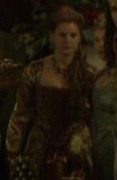
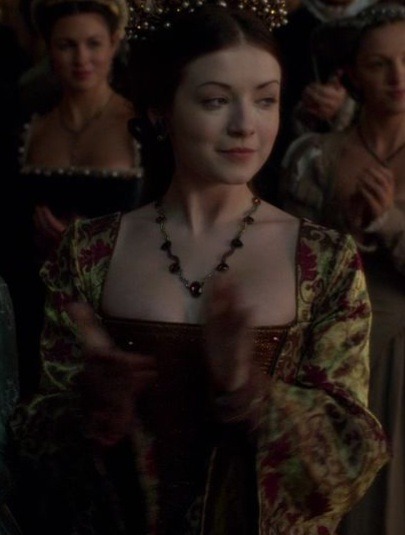
#recycled costumes#the tudors#natalie dormer#anne boleyn#sarah bolger#mary i of england#period drama#costume drama#historical drama#reused costume#reused costumes#dramasource#drama series#source: historicalreusedcostumes
22 notes
·
View notes
Text

"The one sent should not fail to pay his respects to some of the lords here, who have influence with the king; and to propitiate the most illustrious and beloved Anne with some trifles, preferably something brave and novel from those parts, which she may know to be worth from 1,200 to 1,300 crowns a year (intertenir la Ill. et Amata Anna con alcuni cosselin piu presto nove et galante di quelle parte, che cognose da ascendemo ad un ducento o trecento scudi lo anno), to be divided among two or three visits." -Augustino Scarpinello, Milanese Ambassador in England, to Francesco Sforza, Duke of Milan. 1531.
#anne boleyn#anneboleynedit#primary sources#in a battle called me vs the prevalence of imperial reports in tudor historiography...#and i am loooooosing <3
52 notes
·
View notes
Text
what’s especially irritating about Philippa Gregory (and most other European historical fiction/fantasy writers (HOTD *cough*) is how they do childbirth. IT WAS STANDARD PRACTICE TO SAVE THE MOTHER OVER THE CHILD!!!! Midwives would pull babies out with hooks or break their bones. The only time c-sections were preformed were when a woman was already dead.
#Off the top of my head - in bed with the Tudors is a source#philippa gregory#house of the dragon#pseudo-medieval nonsense#childbirth tw#infant death tw
2 notes
·
View notes
Text
Mystery also surrounds Owen Tudor's marriage, but there is no question as to its validity or the legitimacy of his offspring. Richard III's proclamations described Tudor as a bastard; his marriage, however, was not disputed.
Ralph Griffiths, "Tudor, Owen [Owain ap Maredudd ap Tudur] (c. 1400–1461)", Oxford Dictionary of National Biography (2004, updated 2008)
#I love that you can just say#“Catherine de Valois and Owen Tudor were married and their children legitimate source: Richard III himself”#but ricardians will still be mad and argue about it#owen tudor#catherine of valois#edmund tudor#jasper tudor#historian: ralph griffiths#catherine de valois
38 notes
·
View notes
